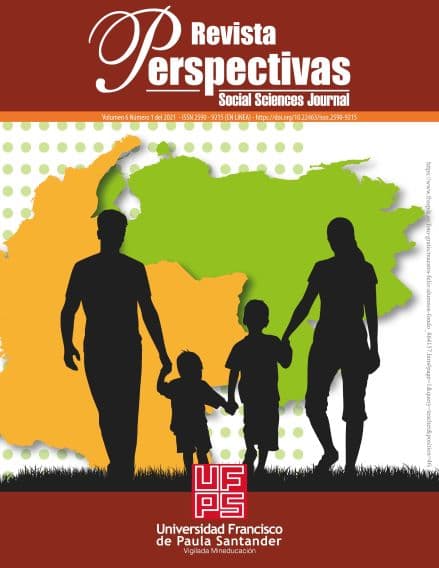Relationship of the propioceptive and tactile systems with the emotional development in infants
Relación de los sistemas propioceptivo y táctil con el desarrollo emocional en infantes
Main Article Content
This research aimed to analyze information from the proprioceptive and tactile systems with the emotional development of children aged 2 to 3. This was achieved through the characterization of emotional development through the qualitative assessment scale of child development - revised (2 years and 1 day to 3 years), the determination of the tactile and proprioceptive system with the support of Winnie Dunn's sensory profile in order to analyze the sensory information of children from 2 to 3 years old. A quantitative research was carried out with a population of 96 children of both genders. A sample of 84 schoolchildren in the kindergarten grade was obtained by means of convenience sampling. With the application of the instruments of qualitative evaluation of the infantile development and Winnie Dunn's sensorial profile, it is possible to identify that the tactile system, is the first system that has interaction with the environment and with the people who surround it, for that reason it is the main receiver of the socio-affective part as it is the first bond with the mother or father; as also the proprioceptive system is the one in charge of the positioning of joints and muscles, it is the indicator of being abrupt with its pairs, preventing to have an assertive relation with its companions and teachers. It is concluded that socio-affective stimuli at an early age are necessary in children, as well as that early programmed stimulation potentiates optimal emotional development.
Downloads
Article Details
Agudelo, L., Pulgarín, L., & Tobares, C. (2017). La estimulación Sensorial en el desarrollo cognitivo de la primera infancia. Revista Fuentes, 19(1), 73-83. Recuperado de http://dx.doi.org/10.12795/revistafuentes. 2017.19.1.04
Álvarez, B., Moreno, M., & Zea, P. (2010). Percepciones de terapeutas ocupacionales sobre el lenguaje y la comunicación de los niños con déficit de integración sensorial. Revista Facultad de Medicina, Universidad Nacional de Colombia, 58(4), 263-271.
American Occupational Therapy Asociation (2008). Occupational therapy practice framework: Domain and process. American Journal of Occupational Therapy, 62, 625-683.
Arias, F. (2012). El proyecto de investigación (6a ed.). Caracas: Episteme.
Armus M., Duhalde C., Oliver M., & Woscoboinik N. (2012). Desarrollo emocional. Clave para la primera infancia de 0 a 3 años (1a ed.). Argentina: UNICEF.
Asociación Probienestar de la Familia Colombiana - Profamilia. (2011). Encuesta Nacional de Demografía y Salud (ENDS 2010). Bogotá: Printex Impresores Ltda. Recuperado de https://profamilia.org.co/wp-content/uploads/2018/12/ENDS-2010.pdf
Ávalos, C. N., & Berrío J. A. (2007). Evidencia del trabajo propioceptivo utilizado en la prevención de lesiones deportivas (trabajo especialista). Universidad de Antioquia, Medellín, Colombia.
Carrascal, Y., & Guerrero, J. (2018). Implicaciones cognitiva y socio afectica en el desarrollo del niño de 3 y 4 años, por su ingreso al preescolar a temprana edad (tesis pregrado). Universidad de Francisco de Paula Santander, Ocaña, Norte de Santander.
Cuelliga, M. (2020). El sentido del tacto y la influencia en el ser. Nuue, Revista de promoción de la investigación. Recuperado de https://www.revistanuve.com/el-sentido-del-tacto-y-la-influencia-en-el-ser/
DANE (2016). Pirámide de población total según sexo y grupos quinquenales de edad. Recuperado de https://geoportal.dane.gov.co/midaneapp/pob.html.
Dezcallar, T. (2012). Relación entre procesos mentales y sentidos háptico: emociones y recuerdos mediante el análisis empírico de texturas (tesis doctoral). Universidad Autónoma de Barcelona, Barcelona, España.
Diez, E. (2014). La propiocepción como método de prevención de lesiones (trabajo de Grado). Universidad del León, Venganza, Chile.
Fundación investigación biomédica. (2011). Aspectos éticos en la investigación biomédica. Recuperado de http://www.iisgm.com/wp-content/uploads/2011/09/Aspectos-Eticos-en-Investigaci%C3%B3n-Biom%C3%A9dica.pdf
Galbán, P., Sansó, F., Díaz-Canel, A., Carrasco, M., & Oliva, T. (2007). Envejecimiento poblacional y fragilidad en el adulto mayor. Rev Cubana Salud Pública, 33(1), 1-17. Recuperado de http://scielo.sld.cu/scielo.php?script=sci_arttext&pid=S0864-34662007000100010
Lerma, H. (2016). Metodología de la investigación: Propuesta, anteproyecto y proyecto (5th ed.). Bogotá: Eco Ediciones.
Miñambres, D. (2017). ¿Qué es el Sistema Propioceptivo en Fisioterapia y el deporte? Recuperado de https://rehabilitacionpremiummadrid.com/blog/diego-minambres/que-es-el-sistema-propioceptivo-propiocepcion-en-fisioterapia-y-deporte/
Ministerio de Educación Nacional (Mineducación). (2009). Desarrollo infantil y competencias en la primera infancia. Bogotá, Colombia: Mineducación. Recuperado de https://www.mineducacion.gov.co/primerainfancia/1739/articles-178053_archivo_PDF_libro_desarrolloinfantil.pdf
Rosenzweig M, Breedlove M, Watson N. & Morgado, I. (2005). Psicobiología: una introducción a la neurociencia conductual, cognitiva y clínica. Barcelona: Ariel.
Sánchez, E. (2020). Desarrollo Emocional en la infancia. Recuperado de https://www.psicoactiva.com/blog/desarrollo-emocional-en-la-infancia/
Soledad, M. (s.f.). Las técnicas de investigación: La observación . Recuperado de https://www.academia.edu/36157300/Las_t%C3%A9cnicas_de_investigaci%C3%B3n_la_observaci%C3%B3n
Velásquez, J. (2001). Curso Elemental de Psicología. México: Selector
Villamizar, W. (2016). Plan de desarrollo Norte de Santander 2016-2019. Un Norte productivo para todos. Recuperado 2019.pdf







